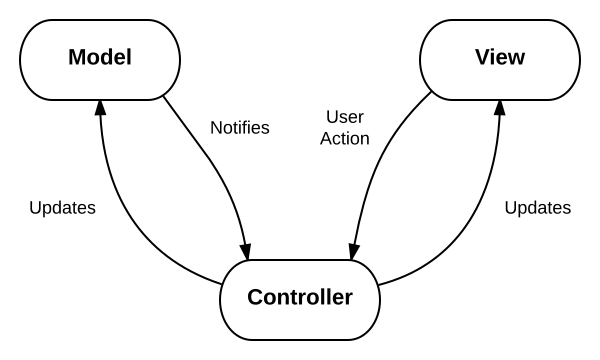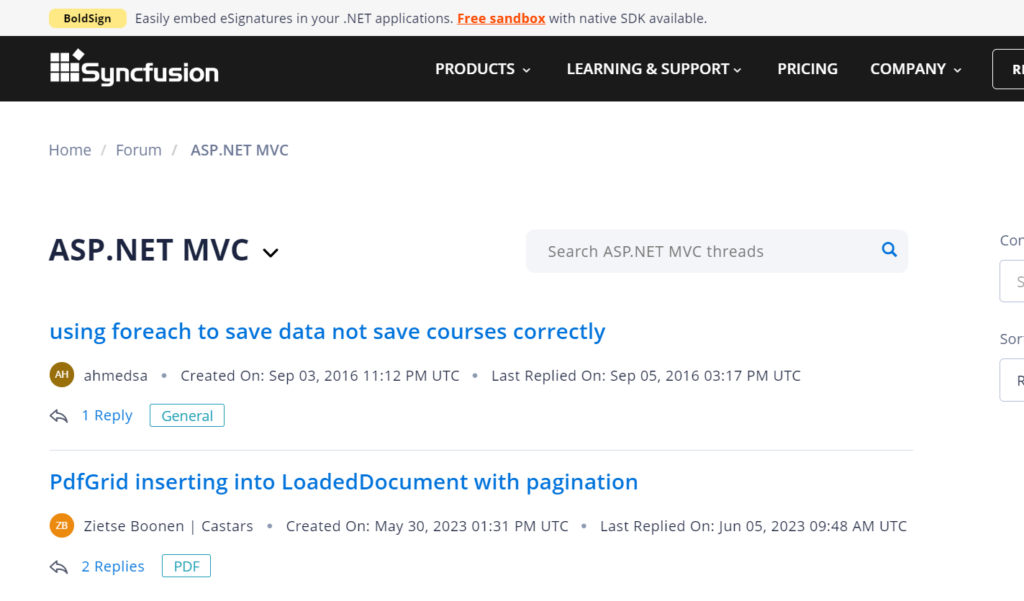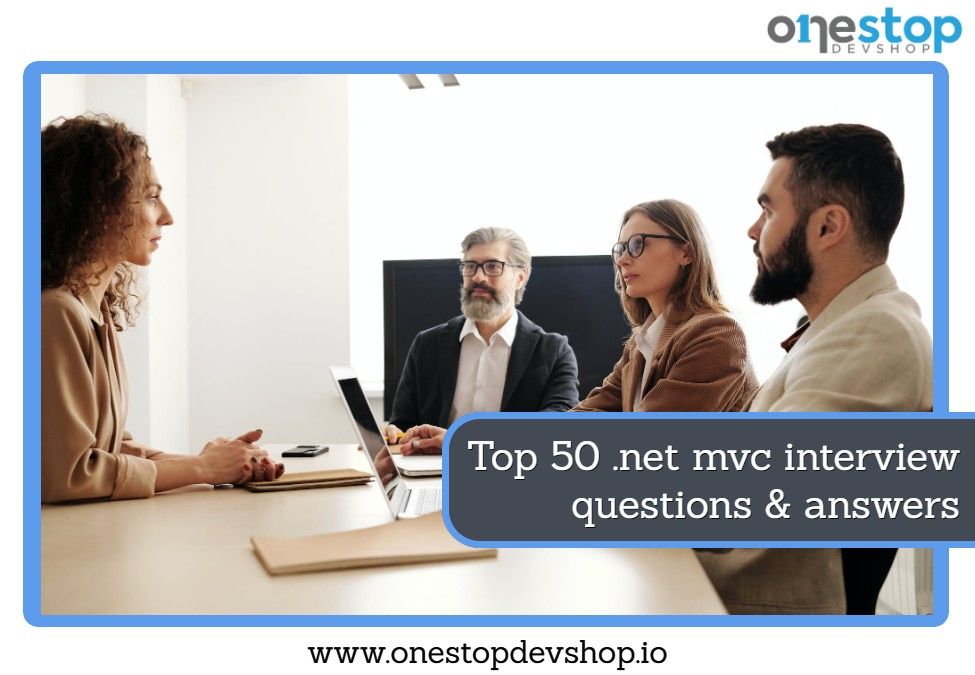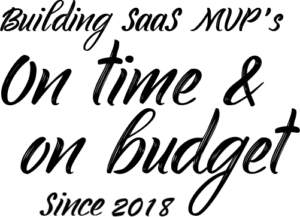Hiring for .NET MVC .NET dev positions requires interviews that test knowledge of the MVC and a developer’s hands-on skills. This is important, especially if you are hiring for a junior/entry-level dev position because some candidates impress in dev interviews but are not competent as developers in a work environment.
In this post, we share the top 50 questions interviewers should include in .NET MVC interviews. The questions focus depth of knowledge and problem-solving in .NET MVC dev environments.

The Importance of Interviewing For .NET MVC Roles
A well-designed and executed interviewing process is important for the following reasons:
Identifying and Hiring the Right Candidates
A .NET MVC interview allows you to identify or shortlist candidates who are worth testing or moving to the next stage. If all goes well in all interviewing stages, you will hire qualified developers who can play a pivotal role in developing robust .NET MVC web applications in your organization.
Testing Problem-solving Abilities
Developer interviews are much more involving and complex because programming is not just about knowledge. By interviewing candidates, you can test them with questions designed to gauge their problem-solving abilities.
Testing Technical Expertise in .NET MVC
The interview process allows you to test or gauge the candidate’s technical expertise in .NET MVC application development. It is usually the longest and most important part of the interview process.
The technical interview questions in this post encompass the following concepts in .NET MVC development that are essential for a developer’s success in this role:
The .NET MVC architectural pattern
.NET developers need to have a deep understanding of the .NET MVC architectural pattern to perform their duties in development teams. They should understand the separation of concerns and efficient data flow in the model-view-pattern application architecture.
Proficiency in the C# programming language
C# is the primary programming language in .NET MVC application development, so your interview questions should be designed to test their grasp of its nuances and capabilities. Ask questions that test their understanding of core concepts in C#, such as:
- Syntax
- Data types
- Variable loops
- OOP concepts
- Conditional statements
- Advanced language features like the use of delegates and events
- Exception handling in C#
C# interview questions also test a candidate’s knowledge of new updates in the language that is crucial to their success in developing modern .NET applications. This may include nullable reference types, pattern matching, functional pipelines, and updated lambda expressions.
The ASP.NET Framework
DotNET MVC application development is done inside the ASP.NET framework. Therefore, .NET MVC developers should possess practical expertise of the framework inside out.
The questions in this post test their understanding of critical ASP.NET programming concepts, such as:
- The ASP.NET pipeline
- The requestion/response life cycle
- Page control events
- Data access techniques in ASP.NET, such as ADO.NET and the Entity Framework
- Caching mechanisms in ASP.NET
- Authentication and authorization
- Razor syntax
- Action Filters
- Model binding
- Validation
- Use of libraries
Frontend .NET MVC Web development
.NET MVC developers are also involved in developing the fronted using technologies provided in the ASP.NET framework. In designing your interview, include questions and tests to gauge their .NET MVC frontend development proficiency.
The interview should include tests or questions to test their understanding of these web languages and technologies. Some of the focus areas to test a .NET MVC developer’s frontend web development proficiency include:
- HTML-
- CSS
- JavaScript
Use of ASP.NET MVC libraries and Tools
ASP.NET has a rich library of pre-made classes and other resources to enable the development of modern MVC applications. As such, interviewers should dig deep into a candidate’s knowledge and experience using these libraries to develop MVC applications in the .NET MVC pattern.
Some of the essential libraries to test .NET MVC developer candidates on include the following:
- The Entity Framework
- SignalR
- Fluent Validation
- json
- AutoMapper
In addition to the libraries, candidates should be tested on their proficiency with standard tools used in .NET MVC development like Visual Studio or VScode and any other you may be using in your organization (such as Docker, Git, Jenkins, Azure DevOps, Slack, etc.).
Overview of the interview process
In brief, the .NET MVC interview process can be broken down into various stages, focusing on different aspects of a candidate’s suitability for the role. Some of the stages you might include in your interview process for these dev positions are:
Initial Screening
To gauge applicant interview suitability, interest in the role and general qualifications. It can be done remotely or without involving the applicants.
Technical Interview
Used to test select candidates’ technical knowledge and experience developing with the .NET MVC pattern. It is the longest and most important stage for most organizations’ developer roles.
The Technical interview stage for .NET MVC roles can be further broken down into the following focus areas:
- Problem-solving and algorithmic tests
- Framework and tool proficiency for .NET MVC development
- Code review and .NET MVC architectural proficiency
The Soft Skills Interview
Used to gauge a candidate’s soft skills needed in .NET MVC development roles such as communication, teamwork, etc. It is usually conducted by qualified HR or communications experts selected for the hiring panel in most organizations.
The Cultural Fit Interview
The cultural fit interview stage involves gauging a candidate’s personality, values, track record, and shortcomings to see if they fit in the organization.
The Management Interview and Onboarding
The last stage involves introducing a few successful candidate(s) to top management, such as the CEO for small companies, senior developers, .NET architects and project managers. It also triggers the employment offer and onboarding process for final candidates, where compensation is discussed.
With all that out of the way, let us now dive into the top 100 .NET MVC interview questions and answers!
Top 50 .NET MVC Interview Questions and Answers for A .NET Developer
1. Explain the Model, View, And Controller Components In .NET MVC And Their Responsibilities.
The MVC architectural pattern in ASP.NET MVC separates web applications into three components:
- The “Model” part is the data and business logic of the .NET MVC web app
- The “View” is responsible for the presentation and the user interface design.
- The “Controller” is made to receive user input, interact with the “Model”, and update the “View” as required.
2. How Does Routing Work In .NET MVC? Describe the Process of Defining and Handling Routes.
Routing in .NET MVC usually maps URLs to the controller actions in applications. Routes can be defined in the RouteConfig file. The corresponding action method is executed automatically when a URL matches a route pattern.
3. What Is Razor Syntax, And How Is It Used In .NET MVC Views?
Razor syntax is the compact and expressive markup syntax used in .NET MVC views to seamlessly incorporate HTML and C# code. It allows developers to easily embed C# code within HTML markups using the @ symbol.
4. Describe the Role of Models In .NET MVC And How They Interact with Views and Controllers.
In .NET MVC, models represent the data and business logic of the application. They are used to encapsulate data, perform validation, as well as interacting with a connected database or other data sources used in a typical .NET MVC web app.
5. How Do You Handle Form Submissions In .NET MVC? Explain the Use Of HTTP Verbs Like GET And POST.
Form submissions in .NET MVC are handled via the HttpPost attribute on the action method as well as the ValidateAntiForgeryToken attribute for CSRF protection. The form data is bound or linked to the model using model binding in ASP.NET MVC.
6. What Is Data Validation In .NET MVC, And How Is It Implemented?
Data validation in .NET MVC is normally implemented using attributes like “Required”, “StringLength”, “Range”, etc., added to model properties. Validation is designed to take place automatically during model binding. It can be checked using the “ModelState.IsValid” method.
7. Discuss the Concept of Partial Views and Their Benefits In .NET MVC.
Partial views enable .NET MVC developers to reuse and modularize “view” components. They can be rendered within other views or controllers via the @Html.Partial or @Html.RenderPartial methods.
8. Explain the Concept of Viewbag And Viewdata In .NET MVC And Their Differences
“ViewBag” and “ViewData” are special methods used to pass data from controllers to views in .NET MVC apps. By design, “ViewBag” uses dynamic properties, while ViewData utilizes a dictionary-like object. Both methods provide a way to transfer application data, but ViewBag is more convenient and less error-prone.
9. How Do You Handle Authentication and Authorization In .NET MVC Applications?
Authentication in .NET MVC is implemented using the built-in authentication solutions like Windows Authentication, Forms Authentication, or external auth providers like OAuth or OpenID Connect where needed.
10. Discuss the Role of Filters In .NET MVC And Provide Examples of Their Usage
In .NET, MVC filters, attributes or classes can be applied globally to specific controllers or actions. They are used to intercept requests and allow custom logic to be executed before, after, or around controller actions in MVC applications.
11. Explain the Concept of Areas In .NET MVC And When You Would Use Them
Areas in .NET MVC allow developers to logically group related controllers, views, and models into separate logical folders. They help organize large applications and promote the separation of concerns.
12. How Do You Implement Caching In .NET MVC Applications to Improve Performance?
Caching in .NET MVC can be implemented using the “OutputCache” attribute. This attribute caches the output of controller actions. As it does this, it improves app performance by serving cached content instead of re-executing the action unnecessarily.
13. Describe the Process of Bundling and Minification Of CSS And JavaScript in .NET MVC
Bundling and minification combine and compress multiple JS and CSS files into a single “minified” file. This reduces the number of requests made to the server, thus improving the .NET MVC web application performance.
14. How Do You Handle Error Handling and Logging In .NET MVC Applications?
In .NET MVC applications, error handling is done using the “customErrors” element in the “web.config” file. It can also be done through handling exceptions in the “Application_Error” event in the “Global.asax” file.
15. What Is Entity Framework, And How Does It Facilitate Data Access In .NET MVC?
The .NET MVC Entity Framework is an ORM tool that primarily simplifies database access in .NET MVC web applications. It was designed to provide a higher-level abstraction that allows developers to work with databases using C# objects and LINQ queries.
16. Explain the Purpose of Migrations in Entity Framework and How They Are Used
Migrations are used to manage database schema changes over time in the Entity Framework. They allow ASP.NET MVC developers to make updates to the database schema while preserving existing data.
17. How Do You Integrate External Javascript Libraries Like Jquery In A .NET MVC Application?
To integrate JavaScript libraries like jQuery in a .NET MVC application, devs can include the library’s script file in their project and reference it in the views as needed according to the design of their application.
18. What Is the Purpose of Nuget in .NET Development, And How Do You Use It?
NuGet is a package manager used across .NET, including the ASP.NET MVC framework. It simplifies the addition and management of external libraries and dependencies in a .NET MVC project.
19. Describe the Process of Deploying A .NET MVC Application to A Web Server
Deploying a .NET MVC application to a web server mainly involves publishing the application to a target folder and then transferring the published files to the web server using tools like FTP or Azure App Service deployment.
20. How Do You Use Visual Studio for Debugging and Troubleshooting Issues In .NET MVC Applications?
Visual Studio is equipped with various debugging features for .NET MVC, such as breakpoints, inspecting variables, stepping through code, and viewing call stacks. The Visual Studio debugger makes identifying and troubleshooting issues in a development environment easier.
21. What Are Some Advantages of Using Git for Version Control In .NET MVC Development?
Git is a popular version control system that can be used in .NET MVC development. It provides features like branching, merging, and version history, enabling dev teams to collaborate and manage source code efficiently without conflicts or disorganization.
22. Explain the Concept of Continuous Integration (CI) And How It Can Be Achieved In .NET MVC Projects.
Continuous integration (CI) is a standard application development practice where changes are frequently integrated into a shared repository. In .NET MVC, continuous integration (CI) can be achieved using tools like Azure DevOps Pipelines for automating the build, test, and deployment processes.
23. Discuss the Role of Docker in .NET MVC Development and How It Facilitates Deployment.
Docker is a popular platform primarily used for application containerization. In .NET MVC development, Docker packages applications and dependencies into containers for easy deployment and scalability.
24. How Do You Use Azure DevOps (Or Other Similar Tools) For Project Management And CI/CD In .NET MVC?
Azure DevOps is a set of development tools provided by Microsoft that offers features like version control, build pipelines project management, release management, and integration with Azure services, making it suitable for .NET MVC development and CI/CD workflows.
25. What Are Some Benefits of Using A Task Runner Like Gulp or Grunt In .NET MVC Development?
Visual Studio Code is a lightweight and extensible code editor widely used in .NET MVC development. It provides features like IntelliSense, debugging, and source control integration. It supports various programming languages and extensions.
26. How Would You Use Postman for Testing and Debugging Web APIs in .NET MVC?
Postman is a popular development tool used for testing and debugging APIs. It allows developers to send HTTP requests, inspect responses, and automate testing scenarios. Postman is useful for testing Web APIs in .NET MVC applications.
27. Explain the Purpose of Swagger (OpenAPI) In A .NET MVC Project And How It Can Be Used.
Swagger (OpenAPI) is a specification and tooling ecosystem for designing, building, documenting, and consuming RESTful APIs. In .NET MVC, Swagger can automatically generate interactive API documentation, client SDKs, and server stubs, facilitating API development and integration.
28. Discuss the Role of Automapper in .NET MVC And How It Simplifies Object-To-Object Mapping.
AutoMapper is a library that simplifies object-to-object mapping in .NET MVC applications. It automatically maps properties between objects with similar names and structures, thus reducing the amount of manual mapping code and improving development productivity.
Load testing involves simulating high levels of user traffic to measure the performance and stability of a .NET MVC application. Developers use tools like Apache JMeter or Microsoft’s Load Testing Service to conduct these tests.
29. How Do You Use Postsharp Or Other Aspect-Oriented Programming (AOP) Frameworks In .NET MVC?
PostSharp is an aspect-oriented programming (AOP) framework for .NET that developers use to modularize cross-cutting concerns, such as caching, logging, and validation. They do this by applying attributes or aspects to target methods or classes in a .NET MVC application.
30. Discuss the Benefits of Using A Front-End Framework Like React or Angular With .NET MVC.
React, and Angular are popular front-end JavaScript frameworks that can be integrated with .NET MVC. They provide powerful tools for building dynamic and interactive user interfaces taking advantage of concepts like component-based architecture and virtual DOM diffing.
31. What Are Some Advantages of Using Azure Functions in Conjunction With .NET MVC Applications?
Azure Functions is a serverless computing platform developed and distributed by Microsoft. It allows developers to build and run small, event-driven code snippets (functions) that can be triggered by various events. It is suitable for microservices and serverless architectures in .NET MVC applications.
32. Explain How You Would Integrate Oauth Or OpenID Connect for Authentication in A .NET MVC App.
OAuth and OpenID Connect are authentication protocols that enable web application users to authenticate with third-party identity providers (such as Google, Facebook, or Azure AD). This enables them to access resources in a .NET MVC application securely.
33. How Do You Use Application Insights or Other Monitoring Tools to Track Application Performance?
Application Insights is a monitoring and diagnostics service provided by Microsoft. It is usually integrated into a .NET MVC application to collect telemetry data, including exception logs, performance metrics, and request traces. This helps developers identify and troubleshoot issues.
34. Discuss the Purpose and Benefits of Using Redis Or Other Caching Mechanisms In .NET MVC.
Redis is an in-memory data structure store used as a caching layer in .NET MVC applications. It provides fast read and write access, thus allowing frequently accessed data to be stored and retrieved quickly to improve application performance.
35. What Are Some Strategies for Optimizing Database Performance in A .NET MVC Application?
MiniProfiler is a lightweight profiling tool for .NET applications, including .NET MVC apps. It allows developers to measure the performance of specific code sections and identify bottlenecks. The tool provides insights for optimization and performance tuning.
36. Discuss the Purpose and Usage of The Health Checks Feature In .NET MVC
Health checks in .NET MVC enable developers to monitor the health and availability of their application’s dependencies, such as databases, external services, or system resources. It can help MVC devs detect issues early and also provides insights into the overall health of the application.
37. How Do You Handle Cross-Site Scripting (XSS) Attacks in A .NET MVC Application?
To handle cross-site scripting (XSS) attacks in a .NET MVC application, developers can sanitize user input by encoding it before displaying it in views. The ASP.NET MVC framework provides built-in features like request validation and output encoding to prevent XSS attacks.
38. Discuss the Role of Action Filters In .NET MVC and Provide Examples of their usage
Action Filters in .NET MVC are attributes that enable devs to add custom behavior to controller actions or globally to all actions in the application. They are primarily used to perform tasks such as logging, authentication, authorization, or modifying the action’s behavior before or after execution.
39. How Do You Implement Role-Based Authorization in A .NET MVC Application?
In a .NET MVC application, role-based authorization can be implemented using the built-in ASP.NET Identity system or custom role providers. MVC developers can define roles, assign users to roles, and then apply role-based authorization using attributes like “Authorize (Roles = “RoleName”).”
40. Describe the Process of Implementing Custom Model Binders In .NET MVC
Custom model binders in .NET MVC allow devs to control how data from HTTP requests is bound to model objects. To implement custom model binders, a developer can create a class that inherits from the ModelBinder base class and override its methods to handle the binding logic.
41. Discuss the Purpose and Usage of The Antiforgerytoken in .NET MVC For CSRF Protection
The AntiForgeryToken in .NET MVC is a security feature used for protection against Cross-Site Request Forgery (CSRF) attacks.
42. Explain the Concept of Asynchronous Controllers In .NET MVC And Their Benefits
Asynchronous controllers in .NET MVC allow developers to handle asynchronous operations, such as making external API calls or querying databases without blocking the request thread.
43. How Do You Implement Custom Route Constraints In .NET MVC?
Custom route constraints in .NET MVC allow developers to define additional conditions for route matching. One can create a class that implements the “IRouteConstraint” interface and define the logic for evaluating whether a specific route parameter value matches the constraint.
44. How Do You Handle Concurrency Conflicts in A Multi-User .NET MVC Application?
Concurrency conflicts in a multi-user .NET MVC application can be handled by using optimistic concurrency control techniques. This involves including a version number or timestamp column in the database table representing the entity being modified.
45. Explain the Concept of Output Caching In .NET MVC And Its Impact on Performance
Output caching in .NET MVC allows MVC developers to cache the output of controller actions or partial views, reducing the need for repeated computations or database queries.
46. Discuss the Benefits of Using Dependency Injection Containers Like Autofac Or Unity In .NET MVC
Dependency injection containers like Autofac or Unity are used in .NET MVC to help with the implementation of the dependency injection pattern. These containers manage the creation and lifetime of objects and resolve dependencies between different components of the applications.
47. How Do You Handle File Downloads In .NET MVC Applications?
File downloads in .NET MVC applications can be handled by returning a “FileResult” from a controller action. The FileResult represents the file to be downloaded, and the developer can specify the file’s content, content type, and file name as needed.
48. Describe the purpose and usage of the @helper syntax in Razor views
The @helper syntax is used to define reusable helper functions that can be invoked within the view. It provides a way to encapsulate commonly used markup or logic into a helper method. Doing this improves code organization and reduces duplication.
49. What are the different types of ActionResult in .NET MVC, and when would you use each?
ActionResult is the base class for all result types returned from controller actions in .NET MVC. The different types of ActionResult are ViewResult (renders a view), PartialViewResult (renders a partial view), JsonResult (returns JSON data), RedirectResult (redirects to a specified URL), and FileResult (returns a file for download). .
50. How would you use Docker Compose to orchestrate multiple containers in a .NET MVC application?
Docker Compose is used to orchestrate multiple containers in a .NET MVC application. Used correctly, it allows one to define and manage a multi-container application using a YAML file. With Docker Compose, one can specify the services, their dependencies, network configurations, and volumes required for the application to run.
Tips for Success In .NET MVC Interviews
Here are some complementary tips from our experts to help you while preparing to interview .NET MVC developers:
Study the Fundamentals Thoroughly
All developer interviews are usually demanding as the interviewer is expected to know the development technology inside out. As an interviewer, you should study every possible concept on .NET MVC development to prepare yourself.
Practice Coding and Solving Problems
As an interviewer, you may need to practice coding to know how scenario-based problems are solved. Practice will also help you identify optimal solutions beforehand to tell a good dev from a bad one during testing.
Be Prepared to Discuss Real-World Projects and Experiences
Be prepared to have deep discussions about real-world problem-solving, project portfolios, and experiences.
Additional Resources
To sharpen your grasp of .NET MVC concepts, we suggest you utilize the following additional resources as you prepare to interview candidates:
.NET MVC documentation
The .NET MVC documentation by Microsoft has all the material you need for every possible .NET MVC concept. Reading the full documentation may not be possible, but you can use it as a reference when researching.
Community Forums and Blogs

There are plenty of forums and blogs on the web covering ASP.NET MVC development concepts, starting with our blog. Good examples include the MSDN forums, the SyncFusion .NET MVC forum, the GitHub MVC forum, to name a few. We recommend the official .NET MVC blog for updated and verified articles on .NET MVC.
Recommended Books and Courses
For books and courses, we recommend ASP. NET Core MVC by Joel Murach and Mary Delamater and Pro ASP.NET MVC 5 by Adam Freeman. There is a good course on Udemy called The Complete ASP.NET MVC 5 Course, but we suggest you start with the official Microsoft course on Microsoft Learn .NET.
Conclusion
Good preparation is vital for interviewers dealing with .NET MVC development candidates. The interviews can be tedious and complex so it pays to have the information you need at the fingertips. Even as an experienced developer, good preparation will give you the confidence you need to conduct effective interviews whose end product is the selection of talented people. All the best!



